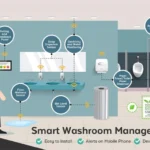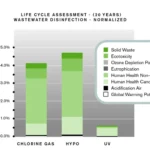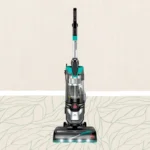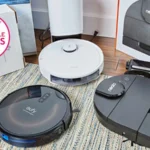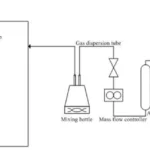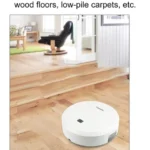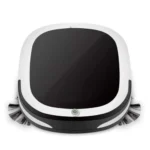Are you tired of constantly battling allergies? Do you find yourself constantly sneezing, coughing and itching? Well, you’re not alone. Allergies affect millions of people around the world, but luckily there are ways to alleviate symptoms. One of the most effective methods is to use a smart vacuum cleaner equipped with anti-allergen technology. But how exactly does this technology work? In this article, we’ll explore the different types of anti-allergen technology used in smart vacuum cleaners and the benefits they offer. So, let’s dive in!
Understanding Allergies
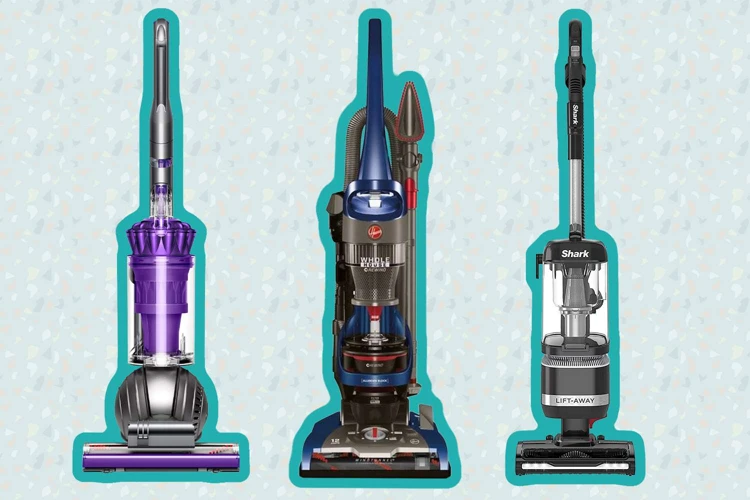
Allergies are a common problem that affects millions of people worldwide. If you or someone in your household suffers from allergies, you know the impact that they can have on your daily life. Allergies can lead to symptoms such as sneezing, coughing, watery eyes, and more, making it difficult to go about your day. While there are various ways to manage allergies, one effective route is by keeping your home as clean as possible. In this section, we’ll take a closer look at what allergies are and how vacuum cleaners can help alleviate allergic symptoms. Learn more about the benefits of smart vacuum cleaners equipped with anti-allergen technology, which we will discuss later in this article.
What are allergies?
Allergies are one of the most common conditions affecting people’s health today. Simply put, an allergy is the body’s hypersensitive immune response to a substance that is considered harmless. These substances, known as allergens, can come from a variety of sources, including pollen, dust, mold, and pet dander. When a person with allergies comes into contact with an allergen, their immune system produces antibodies that trigger the release of histamine and other chemicals in the body, causing inflammation and a range of symptoms.
| Allergy Symptoms | Allergen Sources |
|---|---|
| Sneezing, Runny and Itchy Nose, Watery Eyes | Pollen, Mold Spores, Dust Mites |
| Coughing, Wheezing, Shortness of Breath, Chest Tightness | Pollen, Dust Mites, Pet Dander, Cockroach Droppings, Mold Spores |
| Itchy Skin, Rash, Hives, Swelling | Pollen, Dust Mites, Mold Spores, Pet Dander, Certain Foods and Medications |
For people with severe allergies, exposure to these allergens can cause a potentially life-threatening reaction called anaphylaxis, which requires immediate medical attention. While there is no cure for allergies, there are a number of ways to manage and reduce symptoms, including using a smart vacuum cleaner with anti-allergen technology.
Smart vacuum cleaners with anti-allergen technology are designed to capture and remove allergens from the air, carpets, and other surfaces in the home. By doing so, they can reduce the amount of allergens in the environment, making it easier for allergy sufferers to breathe and live comfortably. However, it’s important to maintain these vacuums properly, as regular maintenance can help to ensure that their anti-allergen technology remains effective. To learn more about how to maintain a smart vacuum cleaner with anti-allergen technology, check out our guide to vacuum cleaner maintenance.
How do vacuums help with allergies?
Strong vacuum cleaners play a vital role in reducing the allergens present in indoor air. When we talk about allergens, we mean any substances that can trigger an allergic reaction. These can be dust, pollen, pet hair or dander, mold spores, and many more. Vacuum cleaners that are equipped with anti-allergen technology are designed to reduce the number of allergens present in the air and the carpeted surface of your home.
Here’s how vacuum cleaners help with allergies:
| Function | Description |
|---|---|
| Capturing allergens from carpets and floors | When you vacuum your floors and carpets, you remove a significant amount of allergens that might be present there. The suction power of the vacuum cleaner pulls the dirt and dust from deep within the fibers, leaving the surface clean and free from pollen, dust mites, and pet dander. |
| HEPA filters | These filters capture even the tiniest particles that might escape traditional vacuum bags. HEPA stands for “high-efficiency particulate air.” These filters can remove up to 99.97% of particles 0.3 microns and larger. |
| UV-C light technology | Vacuum cleaners with this technology use UV radiation to kill germs, viruses, and bacteria that might be present in your carpets and floors. UV-C technology has been used for a long time in hospitals and other healthcare facilities, and now it’s available for home use. |
| Cyclonic filtration | This technology forces air through the vacuum at high speed, creating centrifugal force that separates the dust from the air. The dust particles are then trapped in a container or bag, leaving the filtered air to circulate throughout your home. |
| Ozone treatments | These treatments release ozone into the air, which reacts with harmful particles in the air, neutralizing them. Some vacuums can do this automatically, while others require a separate treatment module. |
| Activated carbon filters | These filters work by trapping pollutants and harmful chemicals in the air. They are especially effective in removing odors from pets, cooking, and smoking. |
Vacuum cleaners that incorporate anti-allergen technology can significantly improve the air quality in your home. Such smart vacuum cleaners not only help those who suffer from allergies and asthma but also contribute to better overall health. If you’re interested in learning more about how smart vacuum cleaners can reduce allergens and improve indoor air quality, check out our article on smart vacuum cleaners and allergies/asthma. And if you’re wondering about the cost of these specialized vacuum cleaners, read our article on smart vacuum cleaner and anti-allergen cost to get a better idea.
Anti-Allergen Technology
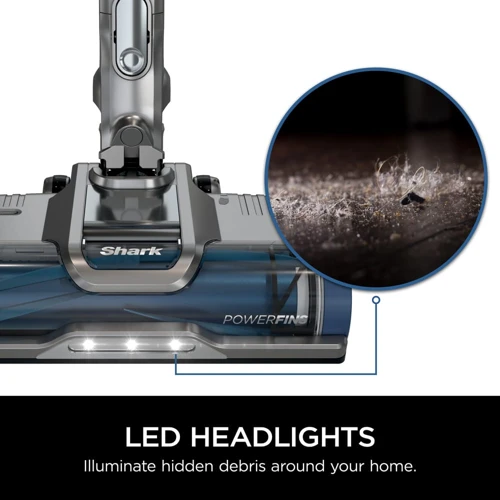
As allergic reactions become increasingly common, people are turning to vacuum cleaners with anti-allergen technology to alleviate their symptoms. These advanced cleaning systems utilize a variety of innovative technologies to ensure that the air in your home is as clean and allergen-free as possible. Here, we will dive into the different types of anti-allergen technologies used in smart vacuum cleaners, including HEPA filters, UV-C light technology, cyclonic filtration, ozone treatments, and activated carbon filters.
HEPA filters
Anti-allergen technology in smart vacuum cleaners makes use of several features to help individuals with allergies breathe easier. One of the most important features is the use of High-Efficiency Particulate Air (HEPA) filters. HEPA filters are designed to capture particles as small as 0.3 microns- for reference, human hair is around 50-100 microns thick. HEPA filters are widely used in air purifiers, vacuum cleaners, and other filtration systems.
How do HEPA Filters Work?
HEPA filters work through a combination of three mechanisms: diffusion, interception, and impaction. As air flows through the HEPA filter, the small particles move in a swirling motion, causing them to collide with each other and become larger. As these particles pass through the filter, they become trapped in the fibers, preventing them from being released back into the air.
| Pros of HEPA Filters | Cons of HEPA Filters |
|---|---|
| Effectively captures small particles, including pollen, dust mites, and pet dander. | May need to be replaced or cleaned regularly to maintain effectiveness. |
| Does not emit any ozone or other harmful pollutants. | May increase the cost of the vacuum cleaner or air purifier compared to other models. |
| HEPA filters are tested and certified to ensure their effectiveness. | May cause some reduction in airflow or suction power of the vacuum cleaner. |
Conclusion
HEPA filters are an essential component of any smart vacuum cleaner designed for individuals with allergies. They are an effective way to remove small particles and allergens from the air, which can lead to improved indoor air quality and reduced respiratory symptoms. Nonetheless, like any technology, HEPA filters do have some limitations that must be considered before purchase. The benefits of HEPA filters make them a worthwhile investment for individuals seeking relief from allergies and asthma symptoms.
UV-C light technology
One of the most innovative anti-allergen technologies in smart vacuum cleaners is the use of UV-C light technology. This technology works by using short-wavelength, ultraviolet light to kill germs, viruses, and bacteria that may be present in your home. The UV-C light disrupts the DNA of these organisms, preventing them from reproducing and effectively killing them.
This technology is especially effective for those with allergies or asthma since it targets the common allergen triggers such as mold and dust mites. Not only does it help relieve allergy symptoms, but it also improves indoor air quality by eliminating harmful particles from the air.
UV-C light technology is typically incorporated into the vacuum cleaner as an additional feature to other filtration systems such as HEPA filters or cyclonic filtration. The table below provides a comparison of the advantages and disadvantages of UV-C light technology in smart vacuum cleaners.
| Advantages | Disadvantages |
|---|---|
| Effectively kills germs, viruses, and bacteria | May not be as effective on larger particles such as pet hair |
| Targets common allergen triggers such as mold and dust mites | May increase the cost of the vacuum cleaner |
| Improves indoor air quality | May not be suitable for those with light sensitivity or compromised immune systems |
It is important to note that UV-C light technology should not be relied on as the sole method of cleaning your home, but rather used in conjunction with other filtration systems for optimal results. Additionally, it is important to use caution when handling UV-C light technology as direct exposure can be harmful to both humans and pets.
The use of UV-C light technology in smart vacuum cleaners is a novel and effective way of battling allergens and improving indoor air quality. When combined with other anti-allergen technologies, it creates a powerful cleaning tool for those with allergies or asthma, providing relief from symptoms and peace of mind.
Cyclonic filtration
Cyclonic filtration is a powerful anti-allergen technology used in many modern vacuum cleaners. It uses strong centrifugal force to separate dust and debris from the air, depositing it in a separate chamber before it reaches the main filter. This technology is highly effective at keeping allergens contained and out of the air, making it a popular choice for allergy sufferers.
How Cyclonic Filtration Works
Cyclonic filtration works by using a powerful motor to create a high-speed vortex that separates dirt and debris from the air. As the air is pulled into the vacuum, it is spun around at an incredibly high speed, causing the particles to be thrown outwards and into a separate chamber. The clean air is then able to pass through the main filter and back into the room, free of allergens and other harmful particles.
Benefits of Cyclonic Filtration
Cyclonic filtration has a number of benefits, making it one of the most highly sought-after anti-allergen technologies on the market. Some of these benefits include:
| Benefit | Description |
|---|---|
| Highly effective | Cyclonic filtration is highly effective at separating dirt and debris from the air. |
| Easy to maintain | Cyclonic filtration systems are designed to be easy to clean and maintain, with most models featuring removable bins or chambers for easy disposal of dust and debris. |
| Budget-friendly | Many vacuum cleaners with cyclonic filtration systems are highly affordable, making them accessible to those on a budget. |
| Energy efficient | Cyclonic filtration systems are highly efficient, using less energy than traditional filter systems. |
Final Thoughts
Cyclonic filtration is a highly effective anti-allergen technology that can help keep your home free of dust and debris. Whether you are dealing with allergies or just looking for a more efficient way to clean your home, cyclonic filtration is definitely a technology to consider. With its affordability, efficiency, and effectiveness, it is no wonder why it has become such a popular choice among homeowners.
Ozone treatments
One of the technologies that some smart vacuum cleaners use to combat allergens is ozone treatments. Ozone is a colorless gas made up of three oxygen atoms. It is highly reactive and can break down pollutants, including bacteria, viruses, and allergens, in the air.
Here is a quick overview of how ozone treatments work in smart vacuum cleaners:
| Step | Description |
|---|---|
| 1 | A smart vacuum cleaner equipped with an ozone generator emits ozone into the air. |
| 2 | The ozone attaches to airborne pollutants, including allergens, and breaks them down at the molecular level. |
| 3 | In some cases, the ozone treatment may also release negative ions into the air, which can further help to eliminate allergens and improve air quality. |
| 4 | The ozone dissipates, leaving behind cleaner, fresher air. |
While ozone treatments can be highly effective in reducing allergens in the air, it is important to use them properly and in accordance with manufacturer instructions, as exposure to high levels of ozone can be harmful to human health. Some smart vacuum cleaners using ozone treatments may also have sensors or other safety features to prevent the release of too much ozone into the air.
It’s worth noting that ozone treatments are not the only solution for combating allergens in the air, and some experts caution against their use. Before investing in a smart vacuum cleaner with ozone treatments, it’s important to research the potential risks and benefits and consult with a doctor or allergist if you have any concerns about how such treatments may impact your health.
Activated carbon filters
Activated carbon filters are another common type of filter found in smart vacuum cleaners that use anti-allergen technology. These filters work by trapping odors, chemicals, and gases in addition to the usual dust and dirt particles, making them ideal for those with sensitivity or allergies to strong odors or chemicals.
The science behind activated carbon filters
Activated carbon is a form of carbon that has been treated with oxygen. This process opens up tiny pores between the carbon atoms, increasing its surface area and making it highly porous. Because of its porous nature, activated carbon is able to attract and hold onto a wide range of particles, including gases and odors.
How activated carbon filters work
Activated carbon filters work by using adsorption to trap particles. Unlike absorption, which is when one substance is taken into the mass of another, such as a sponge absorbing water, adsorption is when molecules stick to the surface of a material.
When air passes through the activated carbon filter, the pores in the carbon capture and hold onto the particles, trapping them in the filter. As a result, the air that is released from the vacuum is cleaner, fresher, and odour-free.
Benefits of activated carbon filters
The benefits of activated carbon filters go beyond just removing unpleasant odors. They can also be effective at trapping harmful particles that can negatively impact the health of people with allergies or sensitivities. By removing these particles from the air, activated carbon filters can improve indoor air quality and make homes safer and more comfortable.
Here’s a table summarizing some key benefits of activated carbon filters:
| Benefits of Activated Carbon Filters |
|---|
| Traps odors, chemicals, and gases |
| Improves indoor air quality |
| Reduces harmful particles that can negatively impact health |
| Effective for those with allergies and sensitivities |
Activated carbon filters are an important element of anti-allergen technology in smart vacuum cleaners. By removing harmful particles and unpleasant odors from the air, these filters provide a cleaner, safer, and more comfortable living environment.
Smart Vacuum Cleaners and Allergies
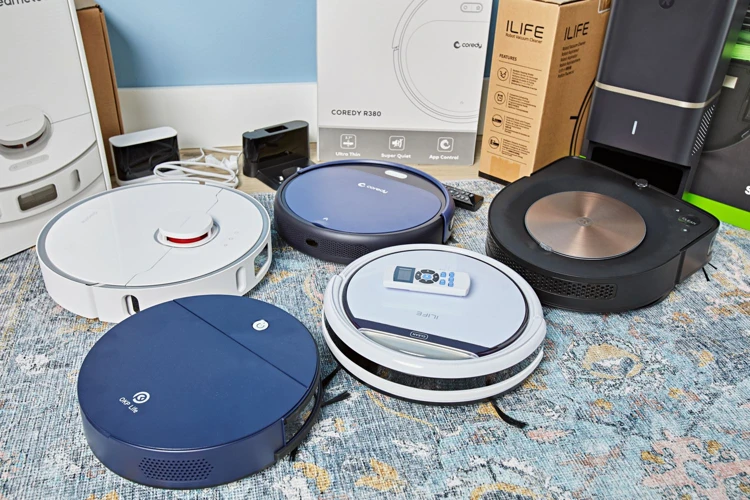
If you or someone in your household suffers from allergies, using a regular vacuum cleaner might not be enough to keep allergens at bay. This is where the power of smart vacuum cleaners comes in handy. These innovative appliances provide a range of intelligent features that can help make cleaning faster and more efficient, while also addressing specific needs of allergy sufferers. In this section, we’ll explore how smart vacuum cleaners can help combat allergies and what features to look for when selecting the right one for your household.
Multi-stage filtration system
When it comes to effectively filtering out allergens and other airborne pollutants, a multi-stage filtration system is essential. Smart vacuum cleaners make use of a range of filtration technologies to ensure the air in your home is as clean as possible.
Pre-filter: The first stage of filtration typically involves a pre-filter. This filter captures larger particles like dust, hair, and dirt, preventing them from clogging the more advanced filters in the system.
HEPA filter: High-efficiency particulate air (HEPA) filters are the gold standard in filtration technology. These filters capture 99.97% of particles as small as 0.3 microns, including pollen, pet dander, and dust mites.
Activated carbon filter: Activated carbon filters are effective at removing odors and volatile organic compounds (VOCs) from the air. These filters contain carbon pellets that adsorb pollutants, leaving your home smelling fresh and clean.
UV-C light: UV-C light technology uses ultraviolet light to kill bacteria and viruses in the air. This technology is particularly useful for households with pets or those who suffer from respiratory illnesses.
Cyclonic filtration: Cyclonic filtration uses centrifugal force to separate particles from the air. This technology is particularly useful for capturing larger particles like pet hair and dust bunnies.
By combining multiple filtration technologies in a single system, smart vacuum cleaners are able to capture a wide range of pollutants and allergens. This multi-stage filtration system ensures that the air in your home is as clean as possible, reducing the risk of allergic reactions and other respiratory issues.
Continuous monitoring and filtration
Smart vacuum cleaners equipped with anti-allergen technology lead the way with their continuous monitoring and filtration capabilities. These vacuums can detect and capture allergens in real-time, ensuring that your home remains free of dust and other particles that can cause allergic reactions.
One of the key features of this technology is the sensor that continuously checks the air for allergens. When the sensor detects a significant amount of allergens, it triggers the vacuum to clean the area thoroughly. This ensures that the air remains clean and free of all irritants.
Once the vacuum starts working, the multiple filtration stages ensure that every ounce of dust, dander, and other microparticles are captured by the vacuum’s filters. The filters are designed to trap and contain even the smallest particles, preventing them from re-entering the air.
To better understand the continuous monitoring and filtration process, let’s take a closer look at the table below:
| Sensor | Filter Type | Filtration Stages |
|---|---|---|
| Continuously monitors air for allergens | HEPA, UV-C, Activated Carbon | Multiple |
| Triggers vacuum to clean when allergens are detected | Cyclonic filtration | Three |
| Monitors filter status and alerts you when it needs replacement | Ozone treatments | Varies |
As you can see in the table above, the sensors continuously keep track of the air quality and trigger the vacuum to clean when allergens are present. The filter types are HEPA, UV-C, and activated carbon. These filters work together in multiple stages to capture all the particles and dust, preventing them from polluting the air again.
A smart vacuum cleaner also comes equipped with cyclonic filtration technology, which allows it to capture more dust and debris. This filter type traps larger particles in the dustbin and prevents clogging the system, ensuring the vacuum works efficiently for longer times.
Ozone treatments are another important feature of some smart vacuums. These treatments create ozone molecules that attach themselves to airborne substances and neutralize them. The filter status is monitored and alerts are sent to the user when replacement is needed, ensuring the vacuum maintains optimal performance.
The continuous monitoring and filtration capabilities of smart vacuum cleaners equipped with anti-allergen technology ensures that your home remains free from allergens and other irritants. This advanced technology provides homeowners with cleaner air, relief from allergy symptoms, and peace of mind.
Automatic suction adjustment
Smart vacuum cleaners with anti-allergen technology go the extra mile to ensure that not only do they capture allergens, but also adjust the suction power based on the type of flooring or surface.
Automatic suction adjustment is a key feature to optimize the cleaning process. When the vacuum cleaner detects a change in suction needs, for example when transitioning from a hard floor to a carpeted area, the suction power automatically adjusts to maintain the best cleaning performance. This feature ensures efficient cleaning without damaging fragile surfaces.
With this advanced technology, smart vacuums can save energy in areas where lower suction settings suffice, and perform strong suction in areas that need extra attention to remove dust and allergens.
If the vacuum cleaner detects a high concentration of dust or pet hair, it increases suction power accordingly, ensuring that the area is thoroughly cleaned.
This automatic feature operates silently and seamlessly in the background, freeing up the user to perform other tasks or relax without worrying about manually adjusting the suction power for different cleaning surfaces.
The benefit of this feature is that it makes cleaning an effortless task, with even better results to ensure that no allergens remain in the house.
Automatic suction adjustment is a significant feature of anti-allergen technology in smart vacuum cleaners. It adjusts suction power automatically to maintain the perfect cleaning performance, reduces energy consumption, and helps the cleaning process to be more efficient and effortless.
Allergy and asthma-friendly certifications
When purchasing a smart vacuum cleaner with anti-allergen technology, it’s important to look for products that have earned allergy and asthma-friendly certifications. These certifications mean that the vacuum has passed rigorous testing to ensure that it effectively removes allergens and irritants from the air. Here are some notable certifications to look for:
- Asthma and Allergy Foundation of America Certification: Vacuum cleaners carrying the Asthma and Allergy Foundation of America (AAFA) certification have been tested to prove their effectiveness at removing allergens and irritants from the air.
- Certified asthma and allergy friendly: This certification is supported by both the Asthma and Allergy Foundation of America and Allergy Standards Limited. Products that carry this certification have undergone thorough testing and are proven to be effective at removing allergens from the air.
- British Allergy Foundation Seal of Approval: The British Allergy Foundation certifies products that have been tested and proven to reduce or remove allergens from the air or reduce exposure to allergens.
- ECARF Seal of Quality: The European Centre for Allergy Research Foundation (ECARF) awards the Seal of Quality to products that meet strict criteria for effective allergen removal.
By choosing a vacuum cleaner that has earned one of these certifications, you can have peace of mind knowing that it has been rigorously tested for effectiveness in removing allergens from your home. This is especially important for people who suffer from allergies and asthma, as clean air is crucial for maintaining good respiratory health.
Benefits of Anti-Allergen Technology in Smart Vacuum Cleaners
Are you tired of feeling the effects of allergies when at home? Perhaps sneezing, coughing, or a runny nose have become all too familiar. Fortunately, the use of anti-allergen technology in smart vacuum cleaners can bring you relief from these symptoms. Not only does this technology improve indoor air quality, but it also helps eliminate common allergens that can trigger allergic reactions. Let’s explore the numerous benefits of incorporating smart vacuums with anti-allergen technology into your cleaning routine.
Cleaner air
With the help of anti-allergen technology in smart vacuum cleaners, you can enjoy cleaner air in your home. These technologies work together to remove even the tiniest particles that can cause allergies and respiratory problems. Here are some ways in which anti-allergen technology can help clean the air in your home:
- HEPA filters: High-efficiency particulate air or HEPA filters are designed to trap even the smallest particles, including pollen, dust mites, and pet dander. They are very effective at removing allergens from the air, which means you can breathe cleaner air indoors.
- UV-C light technology: Ultraviolet-C (UV-C) light is a powerful tool for killing germs, bacteria, and viruses. Smart vacuum cleaners that use this technology can help you get rid of mold, bacteria, and viruses that could cause respiratory problems and allergies.
- Cyclonic filtration: Cyclonic filtration is a process where air is spun rapidly to separate debris from the air stream. This helps remove tiny particles and allergens from the air in your house.
- Ozone treatments: Smart vacuum cleaners that use ozone treatments can help eliminate bacteria and viruses from the air. Ozone is a powerful oxidizer that breaks down particles, making them easier to capture and remove from the air.
- Activated carbon filters: Activated carbon filters are known for their ability to absorb odors and gases. This makes them an excellent addition to smart vacuum cleaners in homes with smokers, pets, or strong odors.
All of these technologies work together to ensure that your home has clean, fresh air. Not only can having cleaner air help alleviate allergy symptoms, but it can also improve the overall quality of the air inside your home. Smart vacuum cleaners with anti-allergen technology are an excellent investment for anyone who wants to improve indoor air quality and keep their family healthy.
Improved indoor air quality
One of the main benefits of using smart vacuum cleaners with anti-allergen technology is that it can significantly improve the indoor air quality of your home. Here are some of the ways in which smart vacuum cleaners can do this:
- Removing Microscopic Particles: Traditional vacuum cleaners may remove visible dirt and debris from your carpets and floors, but they often leave behind microscopic particles that can contribute to poor air quality. Anti-allergen technology, on the other hand, is specifically designed to remove these particles from your carpets, floors, and air, which can significantly improve indoor air quality.
- Eliminating Allergens: Smart vacuum cleaners with HEPA filters, UV-C light technology, cyclonic filtration, ozone treatments, and activated carbon filters can effectively eliminate allergens like dust mites, pollen, pet dander, and mold spores. This means that you and your family will be breathing cleaner air, which can lead to fewer allergy symptoms and better overall health.
- Preventing Allergen Recirculation: Another way that smart vacuum cleaners can improve indoor air quality is by preventing allergen recirculation. This happens when allergens are sucked up by a vacuum cleaner but then released back into the air through the exhaust system. Smart vacuum cleaners with anti-allergen technology are designed to prevent this from happening, which means that the allergens are properly contained and removed from your home.
- Inhibiting Bacterial Growth: Some smart vacuum cleaners also come equipped with antibacterial features, which can help inhibit the growth of bacteria in your carpets and floors. This can be particularly useful for pet owners who may be struggling to deal with pet hair and odor.
- Cleaning Hard-to-Reach Areas: Smart vacuum cleaners with advanced features like continuous monitoring and filtration, automatic suction adjustment, and allergy and asthma-friendly certifications can also help to clean hard-to-reach areas in your home that may be harboring allergens. By doing this, they can improve indoor air quality and reduce allergy symptoms.
Using a smart vacuum cleaner with anti-allergen technology can have many benefits for your home and health. By removing microscopic particles, eliminating allergens, preventing allergen recirculation, inhibiting bacterial growth, and cleaning hard-to-reach areas, they can significantly improve indoor air quality and provide relief from allergy symptoms.
Effective for pet owners
Smart vacuum cleaners with anti-allergen technology are highly effective for pet owners who suffer from allergies. Pet hair and dander can lead to severe allergic reactions, causing sneezing, watery eyes, and shortness of breath. This can be especially problematic for those with pet allergies who love their furry friends and cannot imagine living without them. Fortunately, smart vacuum cleaners equipped with advanced filtration systems can help to alleviate allergic reactions caused by pets.
The multi-stage filtration system, often including HEPA filters and activated carbon filters, catches pet hair and dander as small as 1/1000th of a millimeter. These filters are designed to capture even the tiniest particles, ensuring that pet hair and dander are not released back into the air. As a result, pet owners can enjoy a cleaner home with fresher air, and create an environment that is more comfortable for everyone.
Smart vacuums with continuous monitoring and filtration ensure that pet hair and dander are consistently removed from the environment. With automatic suction adjustment, the vacuum cleaner can detect when there is a heavy concentration of pet hair and adjust its suction power accordingly for maximum cleaning effectiveness. This helps to prevent tough pet hair from getting stuck in carpets or upholstery.
Anti-allergen smart vacuum cleaners also come with additional features such as ozone treatments, UV-C light technology, and cyclonic filtration, all of which combined contribute to better air quality. These advanced features work together to provide the homeowner with a high level of relief from allergies and asthma symptoms.
Many of these vacuum cleaners come with allergy and asthma-friendly certifications, indicating that they have been tested and approved by organizations that specialize in evaluating products for their ability to reduce allergens. These certifications give pet owners the peace of mind that comes with purchasing a product that has been proven to reduce allergens.
Smart vacuum cleaners with anti-allergen technology are highly effective for pet owners suffering from allergies. With advanced filtration systems that capture even the tiniest particles, continuous monitoring and filtration, automatic suction adjustment, and additional features such as ozone treatments and UV-C light technology, anti-allergen smart vacuum cleaners provide a significant reduction of allergens in homes. These cleaners are also often certified as allergy and asthma friendly, giving pet owners peace of mind that they have found a tool to help them and their pets enjoy a clean, healthy living space.
| Benefits for pet owners: |
|---|
| Advanced filtration: Multi-stage filtration systems, HEPA filters, and activated carbon filters. |
| Continuous monitoring and filtration: pet hair and dander are consistently removed for a cleaner home. |
| Automatic suction adjustment: detects heavy concentration of pet hair and adjusts suction power accordingly. |
| Ozone treatments: advanced features work together for improved air quality. |
| Allergy and asthma-friendly: certified to reduce allergens. |
Relief from allergy symptoms
Smart vacuum cleaners with anti-allergen technology offer relief from allergy symptoms by capturing allergens and other irritants that trigger allergic reactions. These vacuum cleaners use a combination of advanced technologies that work together to ensure that the air in your home is as clean as it can be. Let’s take a look at some of the ways these vacuum cleaners work to provide relief from allergy symptoms:
| Technology | What it does |
|---|---|
| HEPA filters | Trap tiny particles including pet dander, dust mites, and pollen that are known to cause allergies and asthma. |
| UV-C light technology | Kills bacteria, viruses, and other microorganisms that can trigger allergy symptoms. |
| Cyclonic filtration | Separates fine particles from the vacuumed air, preventing them from being released back into the air. |
| Ozone treatments | Produces ozone, which can kill bacteria and viruses in the air. However, it can be harmful to humans and pets, so it must be used with caution. |
| Activated carbon filters | Trap odors and chemicals that can trigger allergies. |
By removing these allergens and irritants from your home’s air, smart vacuum cleaners help to reduce the likelihood of an allergic reaction for those who suffer from allergies or asthma. Additionally, when your home’s air is cleaner, you may notice a significant decrease in allergy-related symptoms such as sneezing, coughing, and itchy eyes.
The relief that can be gained from using anti-allergen technology in smart vacuum cleaners is undeniable. With these advanced technologies, allergy sufferers can enjoy a cleaner, healthier home environment and simplified allergy management.
Peace of mind
One of the less obvious but equally important benefits of anti-allergen technology in smart vacuum cleaners is the peace of mind it brings. For allergy sufferers, living with the constant fear of an allergic reaction can be stressful and overwhelming. It’s not just the symptoms, but the fear of exposure to allergens that can cause anxiety and distress.
By using a smart vacuum cleaner with anti-allergen technology, individuals with allergies can rest easy and enjoy a sense of security that their living spaces are being cleaned comprehensively. With advanced filtration systems like HEPA filters, activated carbon filters, cyclonic filtration, and UV-C light technology, the vacuum can capture even the smallest particles that can trigger allergies.
Smart vacuum cleaners are designed to continuously monitor and filter the air to keep it free from allergens and other harmful particles. This means that the user can go about their daily lives without constantly worrying about exposure to allergens.
They can also be sure that their vacuum cleaner is doing an efficient job of cleaning their living space, which can have a positive effect on mental wellbeing. It’s not just the physical relief from allergy symptoms, but the psychological effect of knowing that their home is a safe place that can truly provide peace of mind.
Ultimately, the added peace of mind that comes with using an anti-allergen smart vacuum cleaner is something that can’t be measured. It’s a feeling that can’t be quantified, but its effects can be profound. For individuals with allergies, a smart vacuum cleaner can provide a sense of control over their environment, which can be very empowering.
Conclusion
After going through the detailed information about anti-allergen technology in smart vacuum cleaners, it is evident that these devices can be life-changing for individuals who suffer from allergies or asthma. With their multi-stage filtration systems, continuous monitoring and filtration, automatic suction adjustment, and allergy and asthma-friendly certifications, these vacuums provide numerous benefits.
Not only do they help in cleaning the air and improving indoor air quality, but they are also incredibly effective for pet owners. The various anti-allergen technologies like HEPA filters, UV-C light technology, cyclonic filtration, ozone treatments, and activated carbon filters, each play a significant role in removing allergens from your home.
The benefits of using smart vacuum cleaners with anti-allergen technology go beyond relief from allergy symptoms. These devices also give you peace of mind, knowing that your living space is free from harmful substances that could cause respiratory issues.
In conclusion, for people who experience severe allergies or asthma symptoms, smart vacuum cleaners with anti-allergen technology are a worthy investment. They are designed to provide cleaner air, improved indoor air quality, relief from allergy symptoms, and peace of mind for individuals who prioritize their health and comfort. These devices represent a huge step forward in the quest for allergy relief and are a must-have for anyone wanting to lead a healthier life.
Frequently Asked Questions
1. How do allergies affect the body?
Allergies occur when the body’s immune system reacts to a normally harmless substance, like pollen or pet dander, causing symptoms such as sneezing, itching, and congestion.
2. Can a vacuum cleaner really help with allergies?
Yes, vacuum cleaners can help reduce allergens in the home by removing dust, pet hair, and other irritants from carpets, furniture, and surfaces.
3. What is a HEPA filter?
A HEPA filter is a type of air filter that traps particles as small as 0.3 microns, including pollen, dust mites, and pet dander.
4. How does UV-C light technology work in vacuums?
UV-C light technology uses ultraviolet light to kill viruses, bacteria, and other microorganisms that can exacerbate allergies.
5. What is cyclonic filtration?
Cyclonic filtration is a type of filtration system that uses a high-speed spinning action to separate particles from the air, preventing them from re-circulating into the room.
6. Are ozone treatments safe for allergy sufferers?
No, ozone treatments can actually worsen allergy symptoms and should be avoided by those with respiratory issues.
7. What are activated carbon filters?
Activated carbon filters use activated carbon to remove odors and chemicals from the air, making them ideal for allergy sufferers who are sensitive to certain smells and chemicals.
8. What is a multi-stage filtration system?
A multi-stage filtration system uses a combination of filters and technologies, like HEPA filtration and UV-C light, to provide comprehensive air cleaning and allergen reduction.
9. How does continuous monitoring and filtration work in smart vacuum cleaners?
Continuous monitoring and filtration uses sensors and smart technology to automatically detect and remove allergens, eliminating the need for manual adjustments.
10. What does it mean for a vacuum cleaner to be certified allergy and asthma-friendly?
A machine that is certified allergy and asthma-friendly has met strict guidelines and passed rigorous testing to ensure that it effectively captures allergens and won’t release them back into the air.

